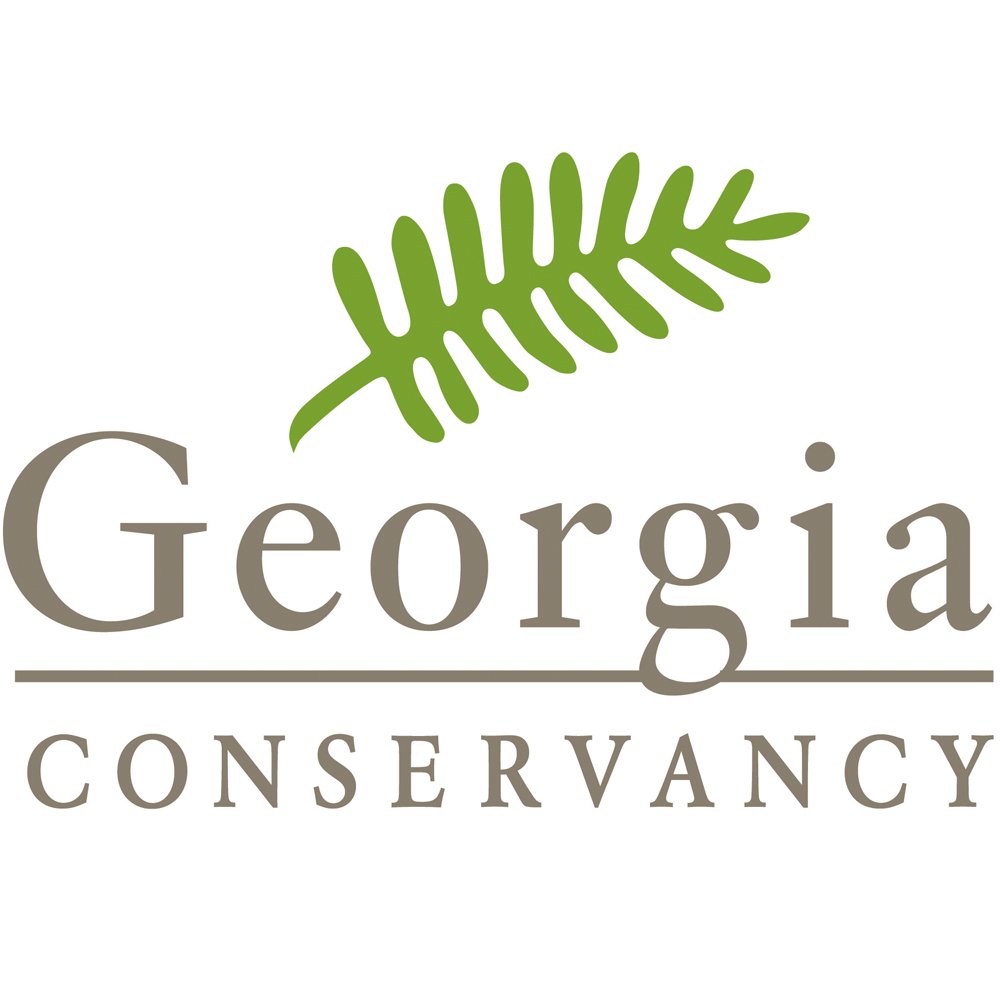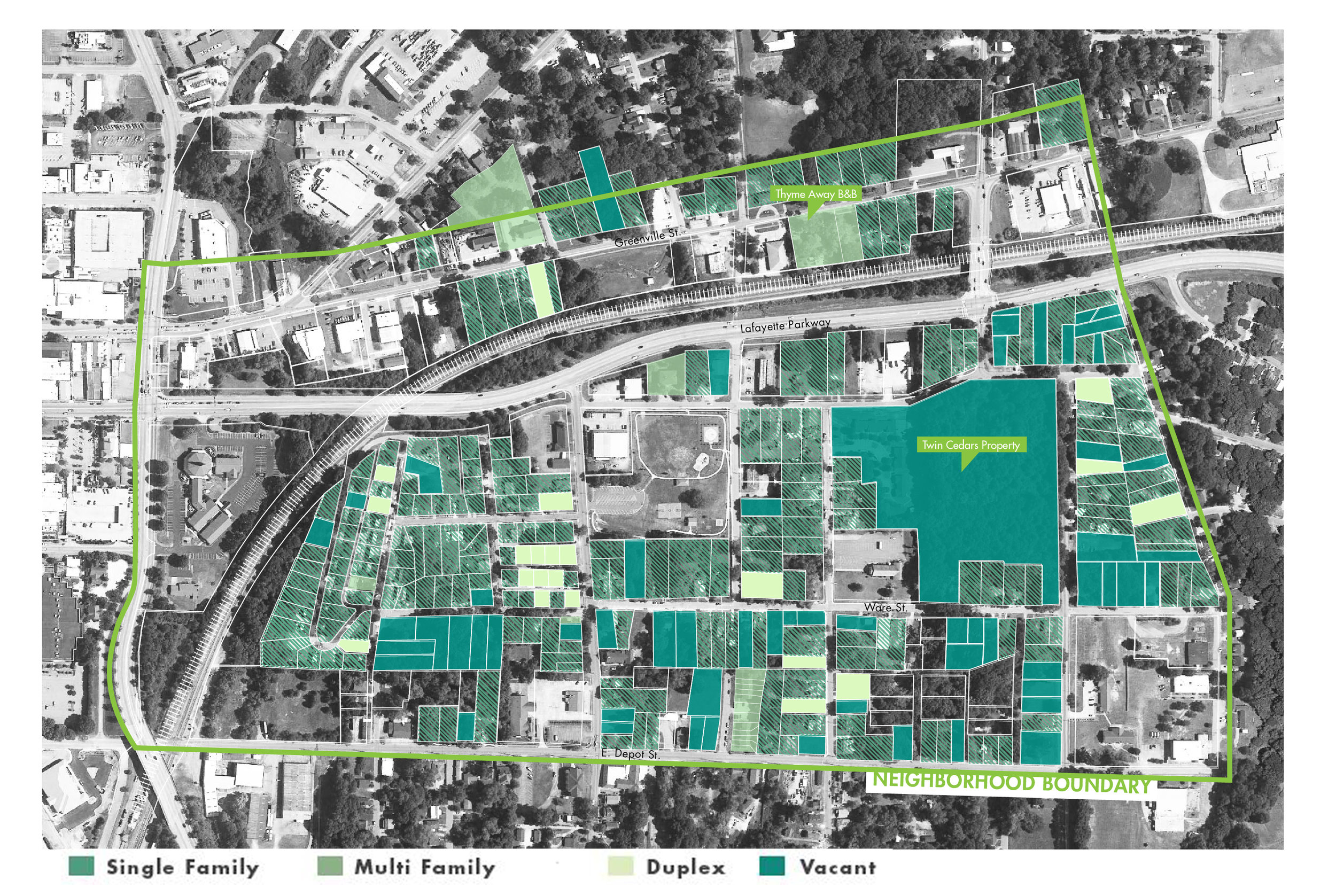Blueprints: Calumet Village
The Georgia Conservancy has been actively engaging and collaborating with citizens and community leaders in LaGrange, Georgia to design a sustainable road map for a re-envisioned Calumet Village, a historic mill neighborhood adjacent to downtown.
Recent sustainable growth efforts of the Georgia Conservancy have centered on thoughtful revitalization, infill and retrofitting of downtowns and in-town neighborhoods, specifically in smaller cities across Georgia. Through our Blueprints for Successful Communities, a 22-year-old sustainable community design initiative, the Georgia Conservancy uses a community and sustainability-based approach to directing community development and redevelopment. The effort’s history is strongly rooted in transparent and thorough stakeholder engagement. The Blueprints process is one of the most highly respected planning processes in the state because of its inclusiveness, transparency, and technical quality.
In 2016, Georgia Conservancy was approached by leadership in LaGrange's Calumet Village neighborhood with the request to assist in a community revitalization vision as one part of a multi-phased effort to support neighborhood residents and stabilize the community. Generous support by the Callaway Foundation, Inc. allowed Georgia Conservancy to accept the invitation and a planning process was developed. The process, developed in concert with leadership of the Calumet Village Neighborhood Association, included public meetings, citizen surveys, coordination with the City, and urban design exercises to identify a community-supported future vision for a revitalized Calumet Village neighborhood.
The Blueprints team includes staff from the Sustainable Growth program of Georgia Conservancy, a professor of urban design from Georgia Tech’s College of Design, and a graduate research assistant also from the College of Design. A project area was determined to include a distance just beyond the neighborhood boundary to ensure the issues and opportunities studied, as well as subsequent recommendations developed to fully integrate with projects and areas outside of the neighborhood boundary. The neighborhood boundary, as identified by the neighborhood association, was considered as: both sides of Greenville Street, Render Street, East Depot Street, and the western edge of Morgan Street, just on the west side of the railroad.
Historic Streetscape view of Vine Street Looking West
During the late 19th century and early 20th, small towns across Georgia thrived as hubs of industry with in-town factories and mills churning out products consumed both near and far. To house a large local workforce, adjacent communities were developed around these major employment centers. Buttressing these mill villages were shops, services and schools which, for decades, created the strong bond of community among residents.
LaGrange in Troup County became a major producer of textiles in the United States. Situated on a rail line, a number of cotton mills were built and employed a large portion of LaGrange’s population. Due to its proximity to both downtown LaGrange and the rail line, LaGrange Cotton Mills was the first cotton mill to be built in the city. The ownership and name changed over time from LaGrange Cotton Mills to Calumet Mills and finally Callaway Mills.
As the production of industrial and consumer goods boomed in post-war America, industries one-by-one began to seek larger and more efficient facilities either in the open land on outskirts of towns, closer to the growing interstate system or overseas. Left behind were abandoned factories and vacant workforce housing upon which our small towns were so dependent. The urban renewal programs that were imposed upon many such towns in the 1960s and 1970s did little to re-incorporate these communities into local economies or to maintain the physical connections to town centers or historic commercial districts. In 1986, Callaway Mills was razed to build St. Peter’s Catholic Church which remains on the site today.
Rich in history, architecture and endemic culture, mill villages that are still in existence today have continued to provide residents with a sense of place and community, even through long stretches of economic struggle. And as an increasing interest in historic preservation and walkable communities has grown among citizens, governments, developers and civic organizations, downtowns are slowly seeing positive revitalization efforts come to fruition. Consequentially, a similar focus on adjacent mill village neighborhoods in our small towns, like that of Calumet Village, has been planted and is beginning to grow.
Imagining PATH Development in Calumet Village
As a former mill village, Calumet has character and history not commonly found in suburban neighborhoods and has a walkable scale desirable today and a necessity during the Calumet Mill’s operation. Recent and current City investments in Calumet’s park and sidewalk inventory demonstrate a commitment to stabilizing this neighborhood. This community framework of the past, supported by present investments, creates an uncommon in-town neighborhood asset. The neighborhood should be serving as an anchor of additional stability and a contributor to the vitality and character of downtown and Lafayette Square. Mapping a way forward through the creation of community stabilization and redevelopment concepts is beneficial not only to the residents and property owners of Calumet, but also to downtown businesses, the City of LaGrange and future businesses and residents of a renewed Calumet.
The recommendations of this community planning process aim to address neighborhood stabilization; strengthen community resources of identify, pride, and political prominence; and guide quality future redevelopment (both in housing, commercial properties and recreational amenities) that keeps with the historic scale and character of this special place. The recommendations include both project ideas and policy needs. The recommendations include small scale, low or no-cost actions that volunteer and neighborhood groups can undertake, as well as large-scale projects requiring significant investment from the City of LaGrange or private entities. It is this combination of efforts, through deliberate, thoughtful leadership of the neighborhood and City which will result in the revitalized Calumet envisioned by the Blueprints planning process participants.
The final Blueprints report includes an itemized task list of recommendations that prioritizes efforts while detailing steps and potential partners. This is meant to be utilized by the community as they move forward on projects to see what additional tasks can be achieved, and to check-in on the status of the items they, as a community, prioritize for implementation.
Housing Types by Lot in Calumet Village
For more information on the Calumet Blueprints, please contact Georgia Conservancy Sustainable Growth Program Manager Katherine Moore at kmoore@gaconservancy.org or Georgia Conservancy Senior Planner Nick Johnson at njohnson@gaconservancy.org.








